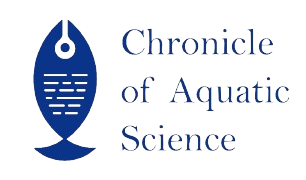| File | Action |
|---|---|
| CoAS_V1IS6_02 | Download |
- 919088951040 call us
- chronicleofaquaticscience@gmail.com Mail us
CoAS_V1IS6_02
Popular Article
Importance of Periphyton to the Ecology of Subtropical river Ganga, India
Durgesh Kumar Verma*, Jeetendra Kumar, Basant Kumar Das, Absar Alam, Dharm Nath Jha and Venkatesh Ramarao Thakur
Abstract
Periphyton is crucial for maintaining the health and function of the aquatic ecosystem. However, excessive nutrient pollution or other forms of pollution can lead to an imbalance in periphyton populations and negatively impact the overall river ecosystem. Efforts to improve the water quality of the Ganga should consider the role of periphyton and its interactions with other components of the ecosystem. These act as a link between the substrate and the water column above, allowing periphyton to influence both ecosystems. The periphyton is an essential source of food for nibbling fish such as Rita rita and Botia sp. These are important bioindicators of water quality in streams and ecological health, and they are also a link in the transportation of resources and energy along numerous food chains. Periphyton is a pollution indicator and an appropriate biotic and abiotic element in aquatic ecology. Variations in habitat factors and substrate determine the natural structure and function of streams.
Keywords
Bioindicator, Aquatic ecology, Periphyton and Ganga River
References
Bahuguna, P. and Baluni, P. (2019). Size– group related variation in the feeding behaviour of an ornamental fish, Puntius conchonius from Mandal River system in Central Himalaya region of Garhwal, India. Environment Conservation Journal, 20(1&2), pp.139-142.
Chavan, S. P., & Shaikh, Y. A. (2019). Periphyton used as live food in fresh water sustainable aquaculture: a review. Research & Reviews: Journal of Food Science and Technology, 8(3), 5-12.
Dora, S. L., Maiti, S. K., Tiwary, R. K., & Anshumali, A. (2010). Algae as an Indicator of River Water Pollution. The Bioscan Special Issue, 2, 413- 422. Dubey VK, Srivastav AL, Singh PK, Sharma YC. (2012). The nutrients level in middle Ganga Basin, India. J Appl Technol Environ Sanit. 2(2):121-8.
Dutta, M. P., Kalita, K., Phukan, B., Baishya, S., & Bordoloi, R. (2018). Periphyton Growth on Natural Substrates and Its Efficacy in Aquaculture.
Ekram-Ul-Azim, M. (2001). The potential of periphyton-based aquaculture production systems. Wageningen University and Research.
EMP, G. and Basin, G.R. (2012). Floral and Faunal Diversity in Middle Ganga Segment. Published by IIT Bombay, IIT Delhi, IIT Guwahati, IIT Kanpur, IIT Kharagpur, IIT Madras, IIT Roorkee.
Gulzar A, Mehmood M. A., Chaudhary R. (2017). Stream periphyton community: a brief review on ecological importance and regulation. Int. J. Appl. Pure Sci. Agric, 3:64-8.
Midterm report ICAR - Central Inland Fisheries Research Institute, under NMCG project, (2019). ‟Assessment of fish and fisheries of the ganga river system for developing suitable conservation and restoration plan”.
Sanghi, R., & Kaushal, N. (2014). Introduction to our national river Ganga via cmaps. Our national River Ganga: lifeline of millions, 3-44. DOI: 10.1007/978-3-319-00530-0_1
Srivastava K, Das S, Thakur V, Alam A, Joshi K. (2019). Biodiversity and spatio-temporal variation of periphyton of the river Ganga (Gangotri to Vindhyachal). Int. J. Fish. Aquatic Stud. 1; 7(1):109-15.
- Published online
- 26th November, 2023
How to Cite the Article
Verma, D. K., Kumar, J., Das, B. K., Alam, A., Jha, D. N. and Thakur, V. R. 2023. Importance of periphyton to the ecology of subtropical river Ganga, India. Chronicle of Aquatic Science 1(6): 30-38.
Copyright
This is an open-access article distributed under the terms of the Creative Commons Attribution License (CC BY). The use, distribution or reproduction in other forums is permitted, provided the original author(s) and the copyright owner(s) are credited and that the original publication in this journal is cited, in accordance with accepted academic practice. No use, distribution or reproduction is permitted which does not comply with these terms.

CoAS_V1IS6_02


